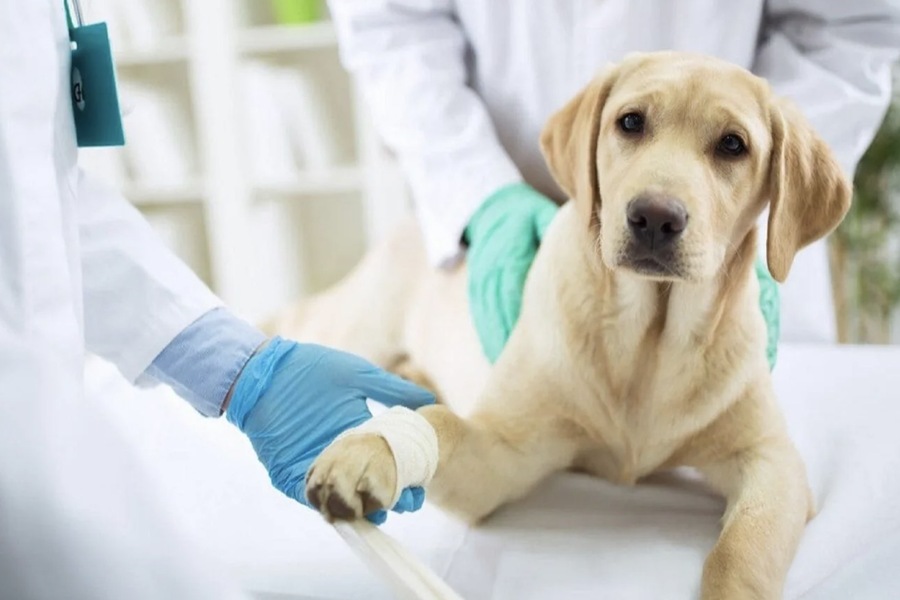Sterilization of Female Dogs: Methods, Benefits, and Postoperative Care
Sterilization of female dogs is a widely recommended procedure aimed at preventing unwanted reproduction, managing behavior, and minimizing the risk of certain health issues. This procedure is often part of responsible pet ownership, as it offers numerous benefits for the pet and its owner. Clinics like Vets in The City emphasize the importance of sterilization, offering expert guidance and care throughout the process. In this article, we’ll explore the various sterilization methods, the advantages of sterilization, the ideal timing for the procedure, indications for sterilization, and detailed preparation and aftercare instructions.
Methods of Sterilization
There are several methods to sterilize female dogs, each with its specific benefits and considerations:
1. Traditional Ovariohysterectomy (Spaying)
This is the most common and effective method for sterilizing female dogs. It involves surgically removing the ovaries and uterus, ensuring the complete cessation of the reproductive cycle. This method prevents pregnancy entirely and significantly reduces the risk of developing certain diseases such as uterine infections and mammary gland tumors.
2. Laparoscopic Sterilization
A modern, minimally invasive approach, laparoscopic sterilization requires only small incisions through which a camera and surgical instruments are inserted. This method is associated with faster recovery times, less postoperative discomfort, and minimal scarring. Although slightly more costly than traditional spaying, the advantages of laparoscopic surgery make it an increasingly popular choice among pet owners.
3. Chemical Sterilization
In cases where surgical sterilization may not be viable, chemical sterilization offers an alternative by using drugs that temporarily or permanently suppress reproductive functions. However, this method is less commonly used due to potential side effects and the fact that it may not be as reliable as surgical methods in preventing pregnancy.
Advantages of Sterilizing Female Dogs
Sterilization has several health, behavioral, and convenience benefits for both pets and owners, including:
Prevention of Unwanted Pregnancy
By sterilizing a dog, owners eliminate the chance of unwanted litters, helping to manage the dog population and avoid the challenge of finding homes for puppies.
Absence of Estrus
A sterilized female dog will no longer go into heat, which means owners can avoid the bleeding and behavioral changes associated with this period, such as increased vocalization and restlessness.
Behavioral Benefits
Sterilized dogs often show a reduction in behaviors driven by mating instincts. They are less likely to try to escape or show aggression linked to territorial behavior.
Reduced Risk of Diseases
Sterilization helps prevent various serious health conditions, including uterine infections (such as pyometra), mammary gland tumors, false pregnancies, and some sexually transmitted diseases. Pyometra, in particular, is a life-threatening infection of the uterus that often requires emergency surgery.

Optimal Age for Sterilization
Veterinary experts recommend sterilizing female dogs between the ages of 3 to 9 months, ideally before their first heat cycle but not before the age of three months. Sterilizing before the first estrus is associated with the highest reduction in the risk of mammary gland tumors, while timing it too early could affect a young dog’s development.
Indications for Sterilization
Certain health and behavioral concerns also make sterilization highly advisable for female dogs, including:
Prevention of Hormone-Dependent Tumors
Early sterilization significantly reduces the risk of hormone-driven mammary gland tumors, which can become malignant.
Reproductive Control
Sterilization is essential in preventing reproduction in non-breeding animals, as it eliminates the need for constant monitoring and supervision during heat cycles.
Management of Behavior
Sterilization can help reduce unwanted behaviors, such as aggression and running away, that stem from hormonal urges during estrus.
Treatment of Medical Conditions
Conditions like hyperestrogenism, ovarian cysts, uterine infections (pyometra), and certain types of alopecia (hair loss) are often managed or prevented through sterilization. In cases of postpartum complications or inflammatory uterine processes, sterilization can be a vital treatment option.
Preparation for Sterilization Surgery
Proper preparation is crucial for a successful sterilization procedure. Here are the main steps:
1. Examination
The veterinarian conducts a thorough examination to confirm the dog is healthy enough for surgery. This may include blood tests, ECG, and for older dogs or those with known health issues, additional tests like blood biochemistry or ultrasound of the heart and abdomen.
2. Vaccination
Dogs should be vaccinated against rabies at minimum, with other vaccinations given according to the owner’s preferences. Any missed vaccinations should be administered at least a month before surgery to ensure adequate immune protection.
3. Deworming and Parasite Control
Deworming is recommended about ten days before the surgery, and pets should also be treated for external parasites (ticks, fleas) one week before surgery.
4. Dietary Adjustments
Three days before surgery, the dog’s diet should be adjusted to include low-calorie, easily digestible foods. On the day of the procedure, refrain from feeding the dog for about 12 hours before surgery to reduce the risk of anesthesia-induced vomiting. Water can be given up to six hours before the procedure.

Postoperative Care for a Sterilized Dog
Following sterilization, proper care and attention are essential for a smooth and comfortable recovery:
1. Provide a Comfortable Environment
A quiet, cozy place with a stable temperature will help your dog feel at ease. Avoiding hypothermia or overheating is essential, and the room should be ventilated daily without drafts.
2. Monitor Body Temperature
Regular temperature checks are necessary as an increased temperature can indicate infection. Any signs of fever should prompt a visit to the vet.
3. Inspect the Surgical Site
The incision site should be checked regularly for redness, swelling, discharge, or unpleasant odors. If any of these signs appear, consult your veterinarian immediately.
4. Promote a Stress-Free Recovery
Reducing stress and providing affection helps the dog feel secure and aids in faster recovery. Dogs are sensitive to stress, and a calm, reassuring environment can make a substantial difference in their healing.
5. Regulate Activity
Avoid strenuous activities but encourage gentle movement to prevent stiffness and promote healing. Short, controlled walks on a leash are ideal as the dog recovers.
6. Adopt a Proper Feeding Routine
Only offer small amounts of water on the day of the surgery. By the second day, introduce soft, easily digestible food in small portions, feeding frequently to avoid putting strain on the digestive system. As recovery progresses, gradually return to a normal diet.
Recovery typically spans one to two weeks, though factors like age, health, and activity level can influence the duration.
Conclusion: Choosing the Right Veterinarian
Sterilizing your dog is an important decision that brings significant health and behavioral benefits. The procedure should always be done by a qualified veterinarian, ideally one with experience in sterilization and pet surgery. When considering sterilization for your dog, seeking a reliable and caring veterinary clinic can make a meaningful difference. For pet owners in Dubai, Vets in The City is a reputable clinic specializing in high-quality, affordable neutering and sterilization procedures. Their experienced veterinarians can guide you through each step, from preoperative preparation to postoperative care, ensuring a safe and comfortable experience for your beloved pet.

Biker, feminist, hiphop head, Saul Bass fan and recent OCAD grad. Making at the intersection of art and mathematics to create not just a logo, but a feeling. My opinions belong to nobody but myself.
